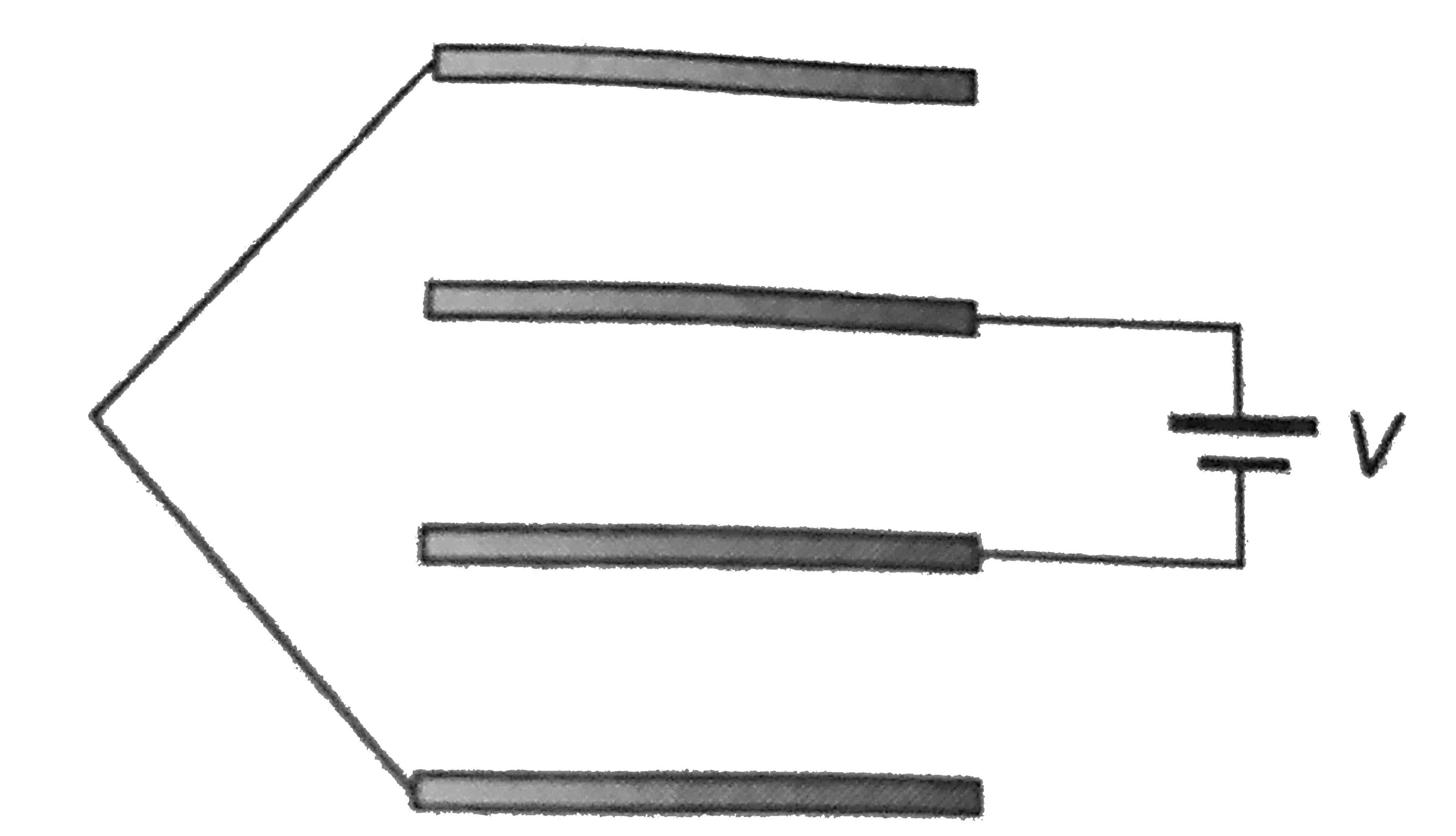A parallel plate capacitor of capacitance 3μF has total charge +15μC on one plate and total charge −15μC on the other plate. The separation between the plates is 1mm. The electric field between the plates has magnitude: (in N/C)
50
100
5000
10000
The correct Answer is:C
To find the electric field between the plates of a parallel plate capacitor, we can follow these steps:
Step 1: Identify the given values
- Capacitance C=3μF=3×10−6F
- Charge on one plate Q=+15μC=15×10−6C
- Charge on the other plate −Q=−15μC
- Separation between the plates d=1mm=1×10−3m
Step 2: Calculate the potential difference (ΔV)
The potential difference across the capacitor can be calculated using the formula:
ΔV=QC
Substituting the values:
ΔV=15×10−63×10−6=5V
Step 3: Calculate the electric field (E)
The electric field E between the plates of a capacitor is given by the formula:
E=ΔVd
Substituting the values:
E=51×10−3=5000N/C
Final Answer
The magnitude of the electric field between the plates is 5000N/C.
---
- Capacitance C=3μF=3×10−6F
- Charge on one plate Q=+15μC=15×10−6C
- Charge on the other plate −Q=−15μC
- Separation between the plates d=1mm=1×10−3m
The potential difference across the capacitor can be calculated using the formula:
ΔV=QC
Substituting the values:
ΔV=15×10−63×10−6=5V
The electric field E between the plates of a capacitor is given by the formula:
E=ΔVd
Substituting the values:
E=51×10−3=5000N/C
The magnitude of the electric field between the plates is 5000N/C.
Similar Questions
(a) Find the potential difference between the plates of a parallel plate capacitor of capacitance 5μF if a charge +800μC is placed on one plate and-200μC on another plate.
(b) The charege given to plate are as shown. The capacitance between the adjacent plates is C. find the charge on outer surface of plate 3, and potential difference between plate 1 and 2.
(c) If A is area of each plate and d is separation between adjacent plates, find the charge supplied by battery.
(d) Five idential capacitor plates each of area A are arranged such that adjacent plates are at a distance d apart. the plates are connected to a source of emf V as shown. what is the magnitude and nature of charge on plates 1 and 3 respectively?



View SolutionA parallel plate capacitor having a capacitance of 4μF has a charge of 1μF on its plates. If the charge on the plates is increased to 2μF, then the new capacitance of the capacitor will be
View Solution
Knowledge Check
One plate of a capacitor of capacitance 2μF has total charge +10μC and its other plate has total charge +40mUC. The potential difference between the plates is (in Volt).
A7.5B15C25D50A parallel plate capacitor of capacitance 1μF has a charge of +2μC on one of the plates and a charge of +4μC on the other. The potential difference developed across the capacitor is
A5VB2VC3VD1VA parallel plate capacitors of plate area A has a total surface charge density +σ on one plate and a total surface charge density −σ on the other plate. The force one plate due to the other plate is given by :
Aσ2A22ε0Bσ2A2ε0Cσ2A2ε0Dσ2Aε0
In a parallel plate capacitor with plate area A and charge Q, the force on one plate because of the charge on the other is equal to
View SolutionA parallel plate capacitor of capacitance C is charged to a potential V and then disconnected with the battery. If separation between the plates is decreased by 50% and the space between the plates is filled with a dielectric slab of dielectric constant K=10. then
View SolutionA parallel plate capacitor of capacitance 1μF has a charge of +2μC on one of the plates and a charge of +4μC on the other. The potential difference developed across the capacitor is
View SolutionThe capacitance of a capacitor depends on
(A) Charge on the plates
(B) the size of the plates
(C) the shape of the plates
(D) the separation between the plates
View SolutionIn a parallel plate capacitor of capacitance C, a metal sheet is inserted between the plates, parallel to them. If the thickness of the sheet is half of the separation between the plates. The capacitance will be
View Solution